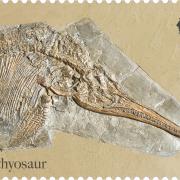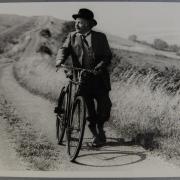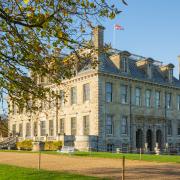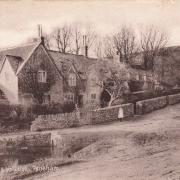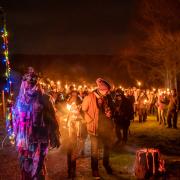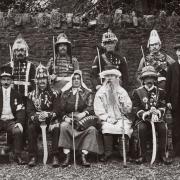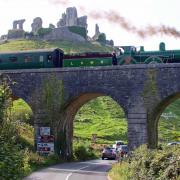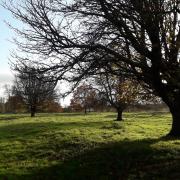Chloe O’Shea, author of Discover Your Dorset Ancestors, reveals how records of the Dorset Militia can help shed new light on your family tree from the 18th century and even tell you about their lives.
The Dorset Militia has existed since Saxon times in various guises. A series of Militia Acts between 1757 and 1762 reorganised all counties militia regiments using elements of conscription. Dorset was the first to raise its own militia, with the county also boasting Britain’s earliest militia records from this period, dating from August 1757. Many counties militia records have not survived well, however those researching Dorset folk are in luck, with many fantastically detailed documents surviving in the archives. George Pitt (later 1st Baron Rivers) was commissioned as Colonel on 25th October 1757; the first militia colonel to be commissioned under the 1757 Militia Act.

Dorset Militia Lists
Each parish was required to provide a set number of able-bodied men aged 18-50 for training. The upper age limit was reduced to 45 in 1762. As there were not enough volunteers, a ballot system was used. Parish officials made lists of appropriately aged men, several of whom were balloted for duty. If a man was selected in the ballot to train in the militia but did not wish to participate, he could find and pay a substitute to take his place. This was commonplace. In one example, Robert Squibb of Sutton Poyntz was balloted to serve in the militia on 23rd March 1762. Three weeks later a record notes that Robert had paid for a substitute named Nathaniel Haydon to take his place. If no substitute could be found, a man could opt to pay a £10 fine. In 1760, that would be the equivalent of around £1000 today, so this option was only available to wealthier members of society.
Some able-bodied men within the age boundaries were exempt. This included the clergy, magistrates and teachers. These men should still be found listed in the militia records, along with their reason for exemption. Most exemptions were due to infirmities. For example, the 1799 list for Holwell records that Thomas Redman, a shoemaker, was exempt as he suffered from fits; and Peter Harvey, a yeoman, was exempt as he had lost three fingers.
The militia listings are popular records for those wishing to trace their family trees as they act as a census of adult males of the time. (The first national census listing people by name was taken in 1841). Depending on the year and rules at that time, personal information about the men supplied can include their occupation, height, age, whether they were married and the number of children they had. The Dorset lists usually give more information than other counties. Extracts from typical Dorset examples can be seen below:

TOLLER PORCORUM 1758
George Legg Shoemaker
Thomas Smith Labourer Lost one finger
John Legg Farmer Has but one eye
John Galpin Butcher
Elias Galpin Sack weaver
OKEFORD FITZPAINE 1799
John Pope Cooper Married 6 children 5’10” Deaf
William Hatcher Jr Butcher - - 5’8” -
Thomas Wittridge Yeoman Married 7 children 5’6” Serving by Substitute
James Wittridge Labourer - - 5’10” -
Edward Prathen Cordwainer Married 5 children 5’6” Poor Man

Duties of the Dorset Militia
So, who were the militia? Their role was based in Britain, with duties including coastal defence and guarding prisoners of war. The militia could be called upon at any time to help with national emergency, or to assist with law enforcement. Men in the regular militia initially served for three years, rising to five years after 1786. Separately, there was also the Local Militia which existed 1808-1816, not to be confused with the regular militia that we’re looking at here.
If the country was at war, the militia were on duty for most of the time and were usually sent outside of their home county. These wars included the Seven Years War (1756-1763) and the Napoleonic Wars (1803-1815). The Dorset Militia also assisted during the Irish Rebellion of 1798. The families of the men on militia duty were paid allowances in their absence.
During peacetime, militiamen were required to attend training for around three or four weeks each year. An article in The Dorset County Chronicle dated 9th June 1825 records how the Dorset Militia had finished their annual period of training, culminating with a Field Day in Pomery, now known as Poundbury Camp. Their accuracy was positively noted and afterwards the Right Honourable Earl Digby, their Colonel, treated them all to a ‘quart of strong beer each’.
The Manual Exercise for the Dorsetshire Regiment of Militia dated 1759 is available to view for free via Google Books. This gives detailed instructions for all 51 commands that the militiamen had to learn to execute perfectly. Information about Militia regiments, as well as articles about annual training and the appointments of officers, was published in the London Gazette, which can be viewed for free online at thegazette.co.uk.

Rioting and Desertion
Conscription into the militia via balloting was not popular and there are records of rioting and desertion. Descriptions of deserters were placed in the local press, including 30-year-old John Cross, born in Canford Magna, seen in The Salisbury and Winchester Journal on 31st August 1801. John was 5 foot 10 ½ inches tall with dark brown hair and is described as a basket maker and violin player. A reward of 20 shillings is offered for his capture.
An article in The Salisbury and Winchester Journal dated 18th May 1789 advertises that the Dorset militia are due to begin their annual training that same day in Blandford Forum. It reminds readers that anybody who does not show up for training will be seen as a deserter and fined £20 or receive six months imprisonment.
Conscription via the ballot system was suspended in 1829 due to its unpopularity with the public, the last list was made in 1831. After this date the militia continued to recruit men through volunteering only. In 1908, they became the Special Reserve.
Posse Comitatus and Levée en Masse
Further lists of able-bodied men were taken in 1798 and 1803/4, namely the Posse Comitatus and Levée en Masse. These reserve forces were required due to the on-going unrest with the French; Dorset was particularly at risk of invasion due to its coastal location. These listed all men of suitable age who weren’t already serving in the militia. It was additionally noted if men owned barges or wagons, or if they were bakers or millers, all of whom were seen as being helpful with supplying the war effort.
Unfortunately, most of the listings for the Posse Comitatus and Levée en Masse did not survive. One of the best examples of the latter in Dorset is for Poole, with lists also available for the Rowbarrow Hundred (Langton Matravers, Studland, Swanage and Worth Matravers) and Corfe Castle. These are all available to view at Dorset History Centre. There are also surviving Posse Comitatus records for Fifehead Magdalen, Kington Magna and West Stour.

Researching the Dorset Militia
For those wishing to research their ancestors in the Dorset Militia, most records are held at Dorset History Centre in Dorchester. The militia ballot listings and details of substitutes can be viewed with a subscription to Ancestry (ancestry.co.uk) in their ‘Dorset, England, Militia Lists, 1757-1860’ collection. The Keep Military Museum in Dorchester has relevant uniforms on display, including a Militia Officers’ Coatee dating from around 1810. The Keep also hold some militia enrolment records for 1812-1831. The National Archives in Kew holds the county’s muster books and pay lists from 1780 onwards in series WO 13.
Visit Chloe’s website at thepastrevealed.co.uk
{BOX OUT 150 WITH BOOK COVER}
Useful Resources
Discover your Dorset Ancestor by Chloe O’Shea: This book focuses on Dorset ancestry and has a chapter on researching forebears in the Dorset regiments, including a section on the Dorset Militia. Published by Family History Federation at £14.95 and available from good bookshops.
The Keep Military Museum: This regimental museum on Bridport Road in Dorchester covers the history all the local regiments including the Dorset Regiment, the Dorset Yeomanry and the Dorset Militia among others (keepmilitarymuseum.org).
Dorset History Centre: Also located on Bridport Road in Dorchester, the Dorset History Centre is home to many of the county’s militia records, some of which can be viewed online at ancestry.co.uk. As well as ballot lists, they also hold related collections, such as payment orders for substitutes (dorsetcouncil.gov.uk/libraries-history-culture/dorset-history-centre).
The National Archives: Visit this site for an excellent research guide about where to find records of the militia, covering 1522-1907 (nationalarchives.gov.uk/help-with-your-research/research-guides/militia).








